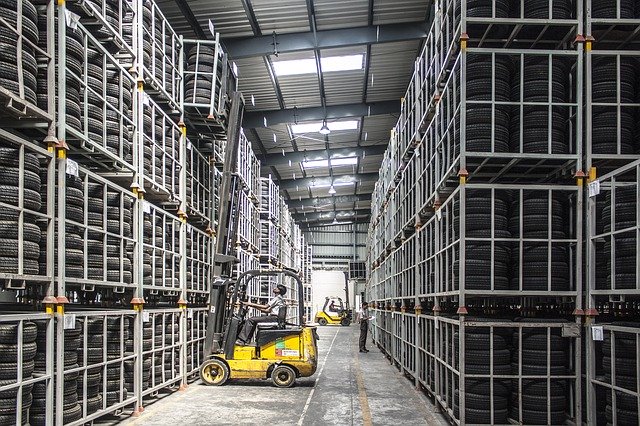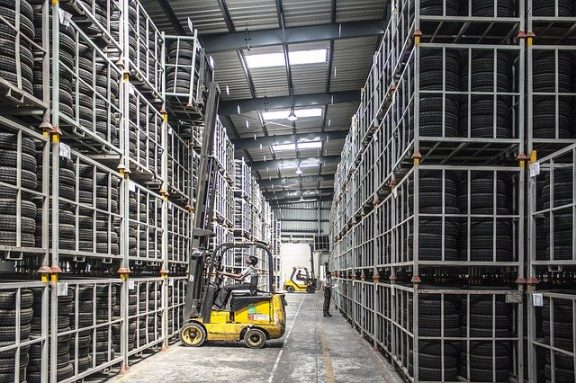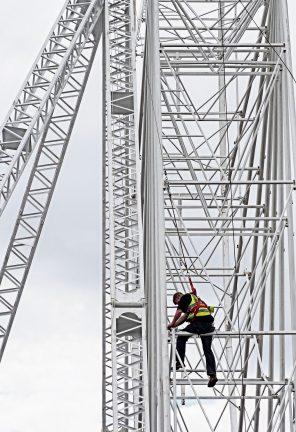
Forklifts & Selective Racking Systems. How Sturdy Does Your Racking System Need To Be?
March 14, 2020What you should know: You do not have to record possible COVID-19 infections on OSHA 300 logs unless the known or reasonably ascertainable facts demonstrate:
(1) the worker has a confirmed COVID-19 case;
(2) the confirmed COVID-19 infection is work-related (i.e. the infection occurred at work); and
(3) the work-related COVID-19 infection resulted in lost work days, restricted duty, death, or medical care beyond first aid.
On April 10th, in recognition that determinations of work-relatedness for COVID-19 infection are practically difficult, OSHA issued guidance that will not enforce its recordkeeping requirements to require employers to make work-relatedness determinations for COVID-19 cases, except where:
(1) There is objective evidence that a COVID-19 case may be work-related; and
(2) The evidence was reasonably available to the employer.
*This guidance does not apply to healthcare industry, emergency response organizations (e.g., emergency medical, firefighting, and law enforcement services), and correctional institutions.
In understanding the three recording criteria, it is important to remember two things. First, an employer’s duty to record an illness is triggered by receipt of information that a recordable injury or illness has occurred. Second, the employer must record the illness within seven calendar days of receipt of that information.That is to say, the employer must know that (1) the case is a confirmed as COVID-19, (2) that the case is work-related, and (3) that it resulted in time away from work or restricted duty (or a fatality) before it has the duty to record.
In evaluating these three criteria, it is important to remember that an employer’s duty to record an illness is triggered by receipt of information that a recordable injury or illness has occurred; and the employer must record the illness within seven calendar days of receipt of that information. 29 C.F.R. § 1904.29. That is to say, the employer must know that (1) the case is a confirmed as COVID-19, (2) that the case is work-related, and (3) that it resulted in time away from work or restricted duty (or a fatality) before it has the duty to record.
1. Confirmed Case of COVID-19.
OSHA directs employers to the Centers for Disease Control and Prevention for information on classifying different cases as “persons under investigation”, “presumptive positive”, and “laboratory-confirmed cases.” The CDC defines laboratory-confirmed COVID-19 cases as “individuals with at least one respiratory specimen that tested positive for the virus that causes COVID-19 at a CDC laboratory.” In order to record suspected COVID-19 exposure, the employer must have a confirmed case.
2. The Infection Must be “Work-Related”.
An illness is considered work-related if “an event or exposure in the work environment either caused or contributed to the resulting condition. . . .” 29 C.F.R. § 1904.5(a). Exposure occurring in the work environment presumes work-relatedness. That COVID-19 is not an inherent hazard to the workplace does not alleviate the duty to record. Though OSHA has exempted employers from recording illness from the common cold or flu, it does require recording of other contagious diseases, such as tuberculosis, brucellosis, hepatitis A, or plague, if the employee is infected at work. 29 C.F.R. § 1904.5(b)(2).
Therefore, the crucial question is whether the employee contracted COVID-19 while at work.
If it is “obvious” in context that workplace exposure was a cause of the injury, the case is work-related. If it is not “obvious” whether COVID-19 was contracted at work, the employer must evaluate the employee’s work duties and environment to decide whether or not one or more events or exposures in the work environment either caused or contributed to the resulting condition. 29 C.F.R. § 1904.5(b)(3). This is fact-intensive question, and revolves around whether the employer was reasonable in its determination of work-relatedness. Work-relatedness should not be determined until the facility is able to reasonably conclude that the worker was infected while at work.
Given the nature of the illness, work-relatedness will be a difficult fact to establish. As a general rule and for most employers, isolated incidents of COVID-19 infection suggest that infection is not work-related; but a significant outbreak at a facility or workplace—especially among employees that work closely with one another—warrants revaluation.
On the contrary, for healthcare providers treating COVID-19 patients, it is far more likely that an employee’s infection is work-related.
3. The Infection Must Result in Restricted Duty or Time Away from Work.
If the employer establishes a self-quarantine or leave policy that results in time away from work, this element is easily established and the work-related COVID-19 infection is recordable.
If the corporate enterprise does not establish such a policy, then infection of COVID-19 (i.e. a positive test) that is work-related must result in death, days away from work, restricted work or transfer to another job, medical treatment beyond first aid, or loss of consciousness in order to be recordable. 29 C.F.R. § 1904.7(a).
COVID-19 exposure results in “days away from work” not only when infection prevents the worker from coming to work, but also even when a physician or other licensed health care professional recommends days away—even if the worker defies that recommendation and does come to work. 29 C.F.R. § 1904.7(b)(3)(ii).
COVID-19 exposure results in “restricted duty” when the employer prohibits the employee from performing one or more of the routine functions of his or her job or from working the full workday; or a physician or other licensed health care professional recommends the same. 29 C.F.R. § 1904.7(b)(4).
Remember, in order for a suspected infection to go on an OSHA 300 log, the employer must be able to reasonably determine that your employee (1) has a positive COVID-19 test (2) that is work-related and (3) that resulted in restricted duty or time away from work. After having this information, the employer has seven days to record.




